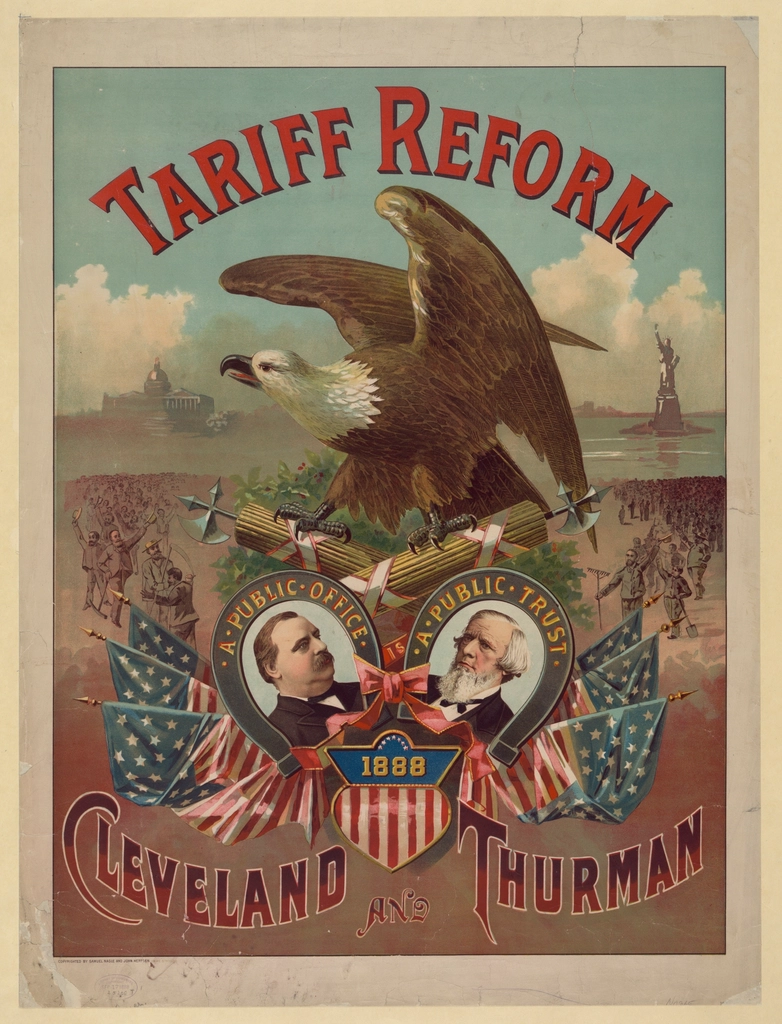President Donald Trump unveiled a sweeping new tariff regime, targeting nearly every major trading partner of the United States. The list, displayed in the White House Rose Garden, imposes aggressive new duties on imports, ranging from 10% on allies like the UK and Australia to a staggering 49% on Cambodia and 50% on Lesotho. The move has been met with predictable outrage from free-market economists and globalist commentators, who have called the policy “idiotic” and self-defeating. But history suggests a different story—one where tariffs aren’t the economic suicide pact elites claim, but rather a tool that rising powers have always used to secure their place in the world.
The Myth of Free Trade
The conventional wisdom that free trade universally benefits all participants deserves historical scrutiny. The case of 19th century Britain is particularly instructive – as the era’s dominant economic power with a relatively small domestic market, England only began advocating for free trade after achieving industrial supremacy behind substantial tariff barriers. Similarly, the United States maintained some of the world’s highest tariffs throughout its industrial development, with rates frequently surpassing 40% in the 19th and early 20th centuries. This protectionist tradition traces back to Alexander Hamilton’s 1791 Report on Manufactures, which explicitly recommended tariffs to nurture fledgling American industries against British competition.
The pattern repeats across other economic success stories. Both Germany and Japan employed significant trade protections during their respective rises to industrial prominence. This historical pattern challenges simplistic free trade orthodoxy and suggests a more nuanced relationship between trade policy and economic development. For those interested in exploring this perspective further, Ha-Joon Chang’s ‘Kicking Away the Ladder: Development Strategy in Historical Perspective’ provides comprehensive analysis of how developed nations used trade protections during their ascent to economic leadership.
In recent decades, China employed state subsidies, intellectual property theft, and non-tariff barriers to gain an advantage. Trump’s tariffs, in this light, are less a radical break than a reversion to historical norms—one that acknowledges the realities of modern economic competition.
Why the U.S. Can Get Away With It
The key, why liberalism is not all too relevant for the U.S. is its market size. The U.S. consumer base is the largest and most lucrative in the world. If companies want to sell here, they’ll have to either absorb the tariffs, shift production stateside, or lose out.
While the European Union technically is a major trading bloc too, it remains challenging to tap into the entire market due to different rules and regulations, multiple languages which require different branding, and occasionally still different currencies.
Despite efforts to diversify, China’s economy still relies heavily on U.S. demand. A full-blown trade war would risk destabilizing its manufacturing sector.
Potential Outcomes
- Short-Term Adjustments – Consumers may see higher prices initially, but the U.S. is better positioned than in past decades to weather disruptions, thanks to energy independence and a flexible labor market.
- Negotiations and Exemptions – Retaliatory tariffs are likely, but many nations will seek compromises to maintain access to the U.S. market.
- A More Balanced Trade System – Rather than a full-scale retreat from globalization, the result may be a recalibration—one where tariffs are higher than in recent years but still lower than historical peaks.
Beyond economics, the move reflects a growing recognition that trade policy is inseparable from national security and power. Reliance on foreign supply chains—for semiconductors, pharmaceuticals, and critical minerals—has proven risky, as seen during the COVID-19 pandemic and rising tensions over Taiwan.
The global trading system has always been shaped by power. Britain’s industrial dominance, America’s rise, and even China’s explosive growth were all built behind protectionist walls. The globalists may howl, but Trump’s tariffs aren’t an aberration. They’re a return to the oldest rule in the book: You look out for your own first. And if you have the power to have others pay more, Trump will.





